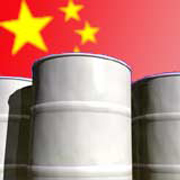The government’s efforts to reorient China’s economy from export- and investment-driven growth to consumption- and services-driven growth is proving difficult to manage, creating upheaval in the all-important infrastructure and housing market. This may have caused a contraction in Chinese lubricant consumption in 2012. This is a unique event for the lubricants industry. What caused this contraction? Can we see more of it in the future? These are important questions not only because of the Chinese lubricant market size and growth, but also because of its impact on other markets around the world.
China’s growth in the past 10- to 15 years has been driven by exports and, more recently, infrastructure investment. Exports account for about 20% to 30% of China’s economic growth. Chinese exports have been hit hard by the recession and the Euro-zone crisis. China will soon face a manpower shortage due to demographic factors. As a result in the 12th five-year plan, the government set itself a target of reorienting the economy from manufacturing-, investment-, and exports-driven growth to consumption- and services-driven growth.
In the wake of the global recession, the Chinese government had announced a massive stimulus spending plan, which propped up growth rates. The easy money policy followed in 2009 lead to a housing bubble and stoked inflation. The tight fiscal and monetary policy followed in the first half of 2012 reflected a desire to avoid a repeat of 2009. By cutting off funding, the government essentially shut down new infrastructure projects. The housing market also contracted due to a combination of high interest rates and government restrictions on project funding.
By around middle of 2012, the government–apparently alarmed by the slump—seems to have put this reorientation on hold and looked at investment growth to drive the economy again. Two interest rate cuts were enacted in the second half of 2012, and the reserve requirement for banks was eased. Additionally, infrastructure projects amounting to more than $150 billion were announced. As a result, growth seems to have picked up in the second half of 2012.
China’s infrastructure sector has an outsized impact on the lubricant market as this sector drives not only construction, but also mining, cement, steel, and other metals. The influence of this sector stretches beyond the country due to its large appetite for various commodities. China accounts for about 40% of the global base metal consumption, including about 55% of iron ore and 40% of aluminum and copper. It is reported that the slowing demand for raw materials from China caused BHP Billiton, a major mining company, to delay many of its investment projects. The impact of China’s infrastructure sector can be felt as far as Australia, Brazil, and Chile for commodities, and Germany and Japan for manufactured goods.
While the impact on other markets is unknown, the impact on the Chinese market has been severe. Based on a recently completed study, Kline estimates that the commercial and industrial lubricant consumption in China experienced double-digit declines in the first half of the year. There has been some recovery in the second half, particularly the last quarter. However, it is not clear if this was sufficient enough to compensate for the contraction in the first half. This is borne out by the lackluster demand for diesel in China, which declined in the first half of 2012 and was flat in the third quarter. Normally, China starts diesel imports by the end of the third quarter to meet peak demand from agriculture and power generation. Instead, this year, China continued to export well into the fourth quarter.
The project of reorienting China to consumption lead growth will have to resume soon because the country cannot continue on the current path indefinitely. The economic value of infrastructure investments will start to reduce as more money is poured into this sector. Eventually, projects with poor financial returns will be taken up as good projects are no longer available. The coming manpower shortage and rising wages make export driven growth a challenge. The Chinese economy will have to reorient to consumption-driven growth. As it does, the impact will be felt in many places. We are heading into interesting times.
Written by Milind Phadke, Director of Energy

